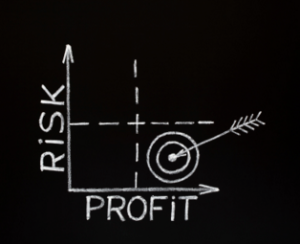Understanding Risk and Volatility in Your Investment Portfolio
If you're like most people, you probably evaluate your portfolio in terms of its return. However, return isn't the only factor you should consider; also important is the amount of risk you take in pursuing those returns. The term "risk" is often understood to mean the risk of loss. However, a portfolio is generally a means to an end, such as paying for retirement or a child's college tuition. In that context, "risk" also means the risk of not meeting your financial needs.
Let's say that Don's portfolio earns an average of 7% a year for 10 years. However, his annual returns have been very uneven; one year his return might be 11%, another year it might be down 10%. Meanwhile, Betty's portfolio also has averaged a 7% annual return in the same time, but her returns have been more even; she hasn't had spectacular years, but she has avoided any negative annual returns.
You might think both would end up with the same amount of money after 10 years, but that's not necessarily the case. It depends in part on the timing and size of the declines in Don's portfolio. A big loss in the first year or two means he'll spend valuable time recovering rather than being able to make the most of compounding; that can affect future growth. That's why it's important to consider an investment's risk-adjusted return.
Volatility measures
One of the most common measures of volatility is standard deviation, which gauges the degree of an investment's up-and-down moves over a period of time. It shows how much the investment's returns have deviated from time to time from its own average. The higher the standard deviation of an investment or portfolio, the bumpier the road to those returns has been.
Another way to assess a portfolio's volatility is to determine its beta. This compares a portfolio's ups and downs to those of a benchmark index, such as the S&P 500, and indicates how sensitive the portfolio might be to overall market movements. An investment or portfolio with a beta of 1 would have exactly as much market risk as its benchmark. The higher the beta, the more volatile the portfolio. (However, remember that investments also have unique risks that are not related to market behavior. Those risks can create volatility patterns that are different from the underlying benchmark.)
The risk of not achieving your goals
Another way to evaluate risk is to estimate the chances of your portfolio failing to meet a desired financial goal. A computer modeling technique known as Monte Carlo simulation generates multiple scenarios for how a portfolio might perform based on the past returns of the asset classes included in it. Though past performance is no guarantee of future results, such a projection can estimate how close your plan might come to reaching a target amount.
Let's look at a hypothetical example. Bob wants to retire in 15 years. A Monte Carlo simulation might suggest that, given his current level of saving and his portfolio's asset allocation, Bob has a 90% chance of achieving his retirement target. If he chose to save more, he might increase his odds of success to 95%. Or Bob might decide that he's comfortable with an 85% chance of success if that also means his portfolio might be less volatile. (Be aware that a Monte Carlo simulation is a projection, not a guarantee.)
Are you getting paid enough to take risk?
Another approach to thinking about portfolio risk involves the reward side of the risk-reward tradeoff. You can compare a portfolio's return to that of a relatively risk-free investment, such as the inflation-adjusted return on a short-term U.S. Treasury bill. Modern portfolio theory is based on the assumption that you should receive greater compensation for taking more risk (though there's no guarantee it will work out that way, of course). A stock should offer a potentially higher return than a Treasury bond; the difference between the two returns is the equity's risk premium. While understanding risk premium doesn't necessarily minimize risk, it can help you evaluate whether the return you're getting is worth the risk you're taking.
Prepared by Broadridge Investor Communication Solutions, Inc. Copyright 2013
